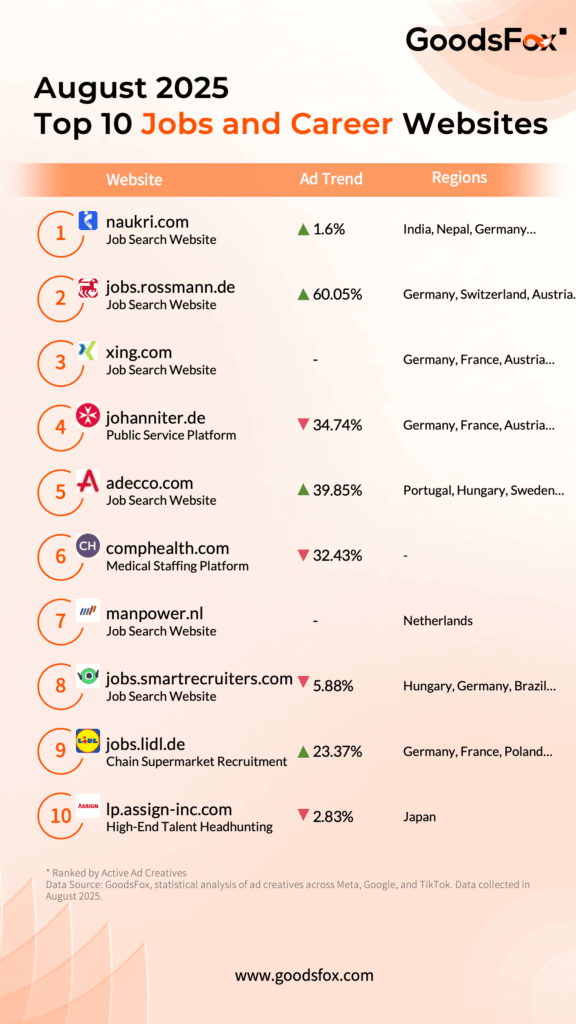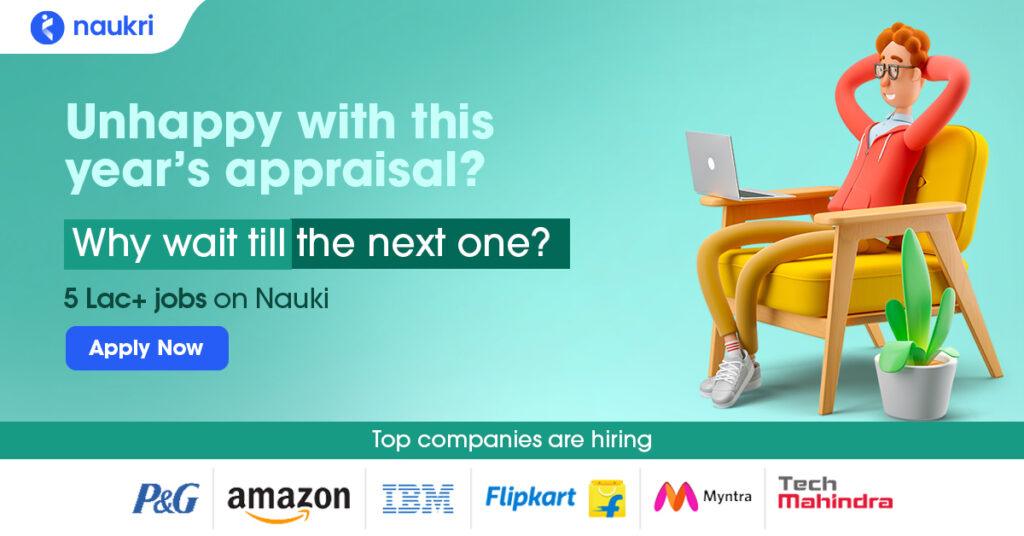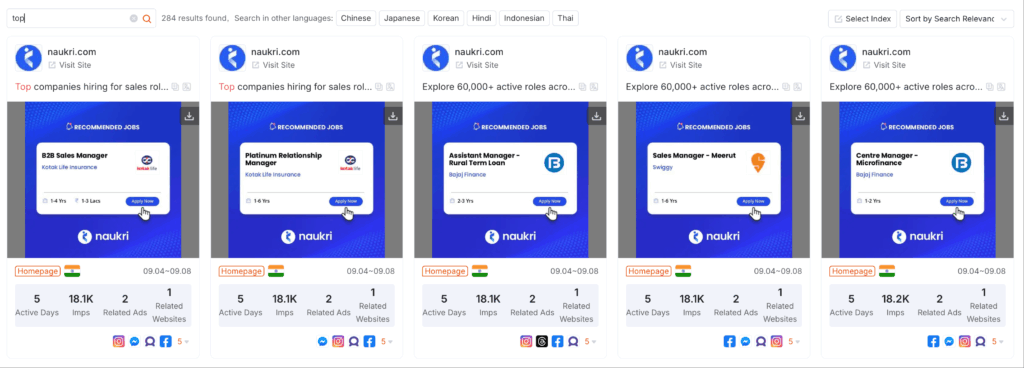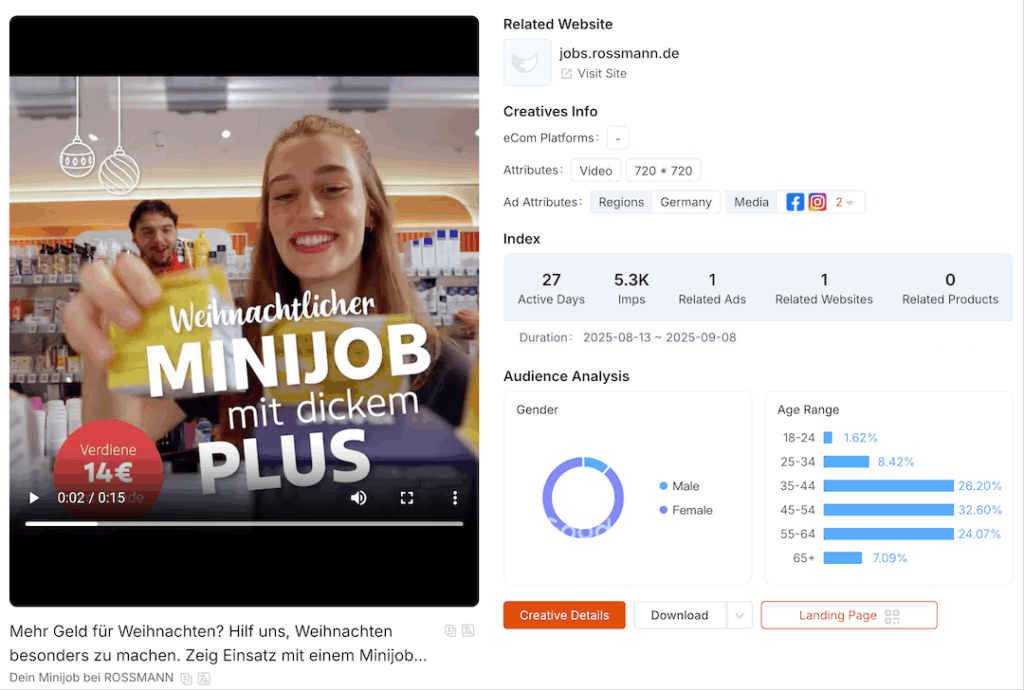In many global workplaces, Indians often rise faster than their peers – especially in mid- and senior-level roles.
Look at any world-class company and you will likely see an Indian face at the top:
- Satya Nadella – CEO of Microsoft
- Sundar Pichai – CEO of Google
- Laxman Narasimhan – CEO of Starbucks
- Shantanu Narayen – CEO of Adobe
On LinkedIn, Indians are known for proactively pitching themselves to companies. Once one Indian joins a firm, it is common to see an “Indian network” take root soon after.
India’s massive 1.45 billion population only fuels this pipeline. According to GoodsFox’s “Jobs & Careers” Websites Ads Top 10 – August, Indian job portal Naukri.com dominates ad spend.
But why do Indians seem to have such strong global workplace penetration? And why are so many job sites in the ranking focused on Germany?
01 The Sense of Deservedness: India’s Self-Narrative
Why do you switch jobs? A higher title? Better pay? A nicer culture?
For many workers today, the answer is simply – to escape burnout.
In China, job-change ads often lean into frustration and anxiety. Take Boss Zhipin, whose ads use a tone of “emotional venting” that resonates with overworked employees.
This is what marketers call empathic storytelling – putting the user in first person so they think, this is me.
India’s approach is very different.
Naukri’s Ads revolve around one key word: “TOP.”
They tell job seekers: here are top jobs from top companies. Google, Amazon, Microsoft logos are front and centre.
They tell recruiters: this is where you find top talent.
“Unhappy with this year’s appraisal? Why wait till the next one? 500K+ jobs on Naukri.”
“Traffic makes you crazy? Time to WFH. Explore remote jobs NOW.”


The tone is direct and empowering — capitalising words like WFH and NOW for impact.
For Indian professionals, finding a job isn’t just survival – it’s upgrading to a better path.
This mindset comes from a strong sense of deservedness. Even if they are a “3/10,” many will present themselves as “10/10.”
For many, this is frustrating — but perhaps there is a lesson. Indians are skilled at self-promotion, direct communication, and confidently seeking opportunities. This makes them highly compatible with Western corporate culture.
02 Another Look at Recruitment Ads
Beyond India, Germany stands out on the August ranking.
Unlike India, Germany faces a rapidly ageing population and a chronic labour shortage, particularly in manufacturing, retail, and services.
This creates a highly competitive hiring environment where job sites and employers must spend more on Ads to reach candidates.
Platforms like Xing.com and employers such as Lidl and Rossmann dominate recruitment campaigns.
Platform-Endorsed
Xing’s Ads look formal and templated — green background, company logo, job title. But the brands they feature have strong credibility:
- BAADER – a leading food machinery manufacturer
- EDEKA Bank – part of Germany’s largest supermarket group
- Sparkasse – Germany’s well-known savings bank network
Human & Energetic
Lidl, Europe’s discount supermarket giant, runs Ads with bright yellow backgrounds and photos of real staff. They show warehouse roles, cashier jobs, and logistics work — with clear salaries displayed.
This is highly visual, transparent, and approachable — particularly appealing to students and part-time workers. Germany’s dual-education system encourages teenagers to join vocational training programmes straight after school, earning while learning.
Culture-Focused
Rossmann runs Ads showcasing fun, relatable scenes: cashiers chatting, restocking shelves, afternoon coffee breaks. These Ads convey that work here is not stressful and leadership is approachable.
“You cannot have happy customers without happy employees.” – Karl Albrecht
Recruitment Ads are more than job posts — they are a mirror of how each country treats labour and employees. India’s Ads celebrate ambition. Germany’s Ads emphasise trust and well-being. China’s Ads channel emotional release. Each reveals a different view of work – and of people.



